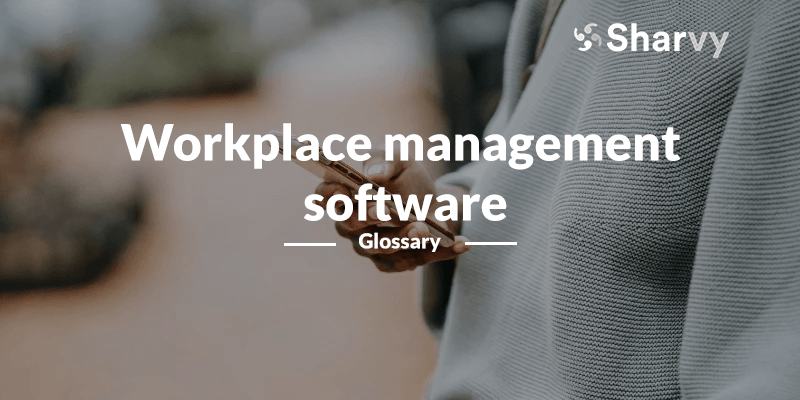Workplace management software: definition & challenges.
Workplace Management software enables companies to improve the management of their workspaces. It aims to structure and optimize premises by collecting a range of data.
There’s a good reason why this type of software has become so popular in recent years!
The reason is apparent : today, nomadism is gaining ground within companies. Teleworking is becoming more widespread, as are video-conferencing meetings and open spaces. At the same time, new ways of organizing work are emerging : flex office, desk sharing, hot desking, etc.
Faced with these changes in the world of work, employers are finding, not surprisingly, that Facility Managers & Workplace Managers are having to deal with new issues that were unheard of just a few years ago :
- Does the advent of hybrid working mean the end of offices as we’ve always known them?
- How can social and environmental concerns be integrated into workspaces?
- How can we offer greater flexibility while improving quality of life and well-being at work?
- Finally, how can we anticipate and adapt to these new paradigms in the world of work?
Office managers are now opting for Workplace Management software to address these issues. Whether the aim is to find out how much space can be freed up to make savings or how best to configure areas and offer better working conditions to the staff, this software is becoming their day-to-day right-hand man.
What are the advantages of it?
This software offers as many advantages for employees as it does for companies.
As far as employees are concerned, they not only regain control of their working environment. They can also anticipate their needs by reserving a workstation before their arrival on site. They can do this remotely at any time of day. They can also get a floor plan of the building and an overview of the workstations available for the day. As a result, scheduling conflicts disappear, and employees no longer feel nostalgic about traditional offices. They (fully) appreciate the hybrid work organization, not least because the software makes it possible to create different desk-sharing zones so your staff can maintain their bearings.
As far as companies are concerned, this software is unprecedented! It allows new forms of working to be introduced (gently). And they limit the problems that arise in hybrid work environments. At the same time, they offer managers real-time monitoring of the occupation and use of workspaces with reliable, up-to-date data.
Finally, and more generally, this software prevents employees from pre-empting offices, endlessly taking possession of them, or occupying common areas and meeting rooms for no apparent or valid reason. This is why they help to optimize the employee experience while improving their well-being, Quality of Life, and Working Conditions (QWL). This is achieved by making it possible to reserve a workstation and/or a room.
How do you set up your Workplace Management software?
First of all, take the time to talk to the decision-makers in your company. In particular, about current needs, employee expectations, and the features you are looking for in this type of software.
It’s worth noting that, with the spread of hybrid working and flex offices within companies, it makes sense for your Workplace Management software to include at least the following functions :
- Intuitive reservation and release of workstations.
- Real-time view of availability & addition of search criteria (e.g : double screen).
- Reservation management (modification and cancellation in just a few clicks).
- Define team zones to facilitate cohesion and interaction.
- Analysis report and monitoring of the occupancy rate of your workspaces.
- Dynamic floor plan for accessible workstation location.
- HRIS integration & third-party solutions that you use internally.
- Customisation options to meet your company’s specific needs.
Next, identify the solutions that meet your needs and budget, then create a table ranking them in order of preference. List the advantages and disadvantages of each.
As well as functionality and cost, several other essential criteria will help you choose from the plethora of Workplace Management software available.
For example, pay attention to the support and diligence of Customer Services. Ensure that your service provider provides you with a full range of services, so you can get quick and practical answers to any problems you may encounter. You should also ensure that the solution you are considering has a web and mobile version and, above all, that it is intuitive and quick for your employees to learn.
Similarly, ensure that the solution you consider complies with good security practices to protect your business and help improve the employee experience. Last but not least, make sure that the solution integrates easily with your ecosystem. In particular, with your HRIS software (Lucca, Kelio, SAP, Cegedim, etc). But also with your communication platforms (Microsoft Teams, Outlook, etc.) and other in-house professional tools (RFID readers and badges, for example).
Finally, one last step is essential before officially choosing your solution. This is to ask for a demonstration and/or test the application free of charge, as we offer at Sharvy, to get a more hands-on experience.

